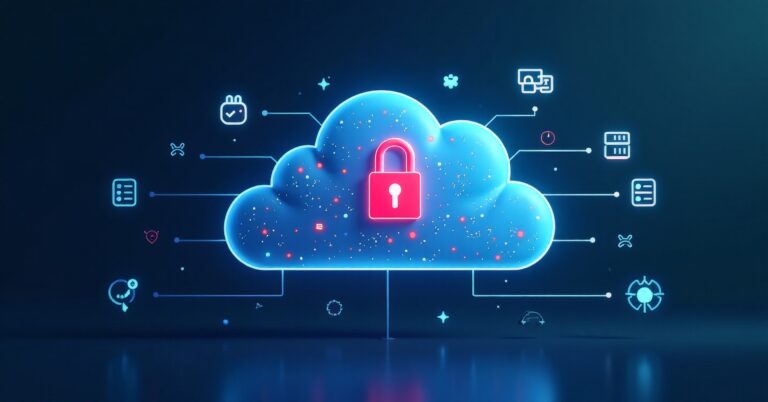Compliance standards, such as those established by the National Institute of Standards and Technology (NIST) and the Australian Cyber Security Centre (ACSC), form the foundation of strong cybersecurity practices. They offer essential guidance for securing systems, safeguarding sensitive data and ensuring operational continuity.
NIST is globally recognised for its comprehensive Cybersecurity Framework (CSF), a benchmark for managing cybersecurity risks. On the other hand, Essential Eight, developed by the ACSC, outlines eight key strategies that establish a baseline security framework to mitigate common threats.
While NIST is widely implemented across industries in the United States and has broad applicability worldwide, Essential Eight is tailored to the needs of organisations in Australia and New Zealand. Let’s explore how these frameworks can streamline compliance efforts and enhance your organisation’s cybersecurity.
What is NIST?
The NIST CSF, established by the U.S. Department of Commerce, is one of the most trusted standards for managing cybersecurity risks. First introduced in 2014 in response to an executive order to strengthen critical infrastructure security, it has grown into a global benchmark for best practices thanks to its flexibility and scalability. The latest Version 2.0 was released on February 26, 2024.
NIST CSF takes a risk-based approach, a strategy that helps organisations focus on the most pressing threats. By addressing the highest-risk areas first, organisations can allocate resources more effectively and minimise potential impacts. Instead of applying uniform measures across all areas, this approach focuses on identifying vulnerabilities, prioritising responses and aligning security efforts with business goals.
Core NIST CSF functions
The framework is built around five primary functions that outline the critical activities required to achieve comprehensive cybersecurity:
- Identify: Gain a clear understanding of your organisation’s critical assets, including data, systems and infrastructure, to determine what is at risk. This involves assessing potential vulnerabilities, mapping system dependencies and recognizing external threats that could impact operations.
- Protect: Establish safeguards to secure critical systems and data. This includes implementing access controls, encryption, employee training and other proactive measures to prevent unauthorised access or misuse.
- Detect: Set up monitoring and detection systems to identify potential cybersecurity events or unusual activities in real-time. These mechanisms help uncover threats early, allowing for faster responses.
- Respond: Create and implement a detailed response plan to address identified threats or breaches. This includes clearly defining roles, communication strategies and actions to mitigate an incident’s impact.
- Recover: Develop strategies to restore operations following a cybersecurity event quickly. This involves data restoration, system recovery, and evaluating the effectiveness of a response to improve future preparedness.
Key industries and applications
NIST CSF is widely adopted across industries due to its adaptability and comprehensive approach. Key sectors include:
- Government and defences: Mandated by federal regulations, NIST is crucial role in securing national security assets and critical infrastructure.
- Healthcare: Ensures compliance with Health Insurance Portability and Accountability Act (HIPAA) regulations, protecting patient data and maintaining its confidentiality and integrity.
- Finance: Helps financial institutions manage risks, safeguard sensitive information and secure transactions.
- Energy: Protects vital infrastructure, such as power grids and pipelines, from potential cyberattacks.
- Technology and telecommunications: Adopted by IT service providers and software vendors to meet global compliance standards and enhance security practices.
- Education: Protects sensitive student and institutional data from breaches, ensuring compliance with privacy regulations and maintaining trust in academic systems.
- Retail: Secures payment processing systems, customer information and supply chain data, helping retailers mitigate risks like data breaches and payment fraud.
- Manufacturing: Protects operational technology, proprietary designs and intellectual property from cyberattacks, ensuring continuity in production and safeguarding competitive advantages.
NIST’s broad applicability and detailed guidelines make it an invaluable tool for organisations aiming to establish a strong cybersecurity foundation.
What is Essential Eight?
The Essential Eight, developed by Australia’s leading authority on cybersecurity, the ACSC, was created to tackle the rising threat of cyberattacks. Formed to strengthen Australia’s digital infrastructure, Essential Eight provides businesses with clear, actionable steps to secure IT environments, mitigate vulnerabilities and minimise the impact of cyber incidents.
Recognising that many organisations, particularly small and midsize enterprises (SMEs), struggle to implement complex cybersecurity frameworks, the ACSC designed Essential Eight to combat frequent and preventable threats. These include ransomware, data breaches and phishing attacks, which pose significant risks to organisations of all sizes.
The framework focuses on eight core strategies that help businesses establish a baseline level of protection, ensure critical assets are safeguarded and simplify compliance requirements.
The Eight Core Strategies
These eight strategies target common vulnerabilities and are designed to mitigate risks effectively. They are:
- Application whitelisting: Only allow trusted applications to run on systems, preventing malicious software from executing.
- Patch applications: Regularly update software to fix vulnerabilities that attackers could exploit.
- Configure macros: Restrict the use of macros in documents is a common source of malware infections.
- Restrict administrative privileges: Limit access to administrative accounts to reduce the potential impact of compromised credentials.
- Patch operating systems: Keep operating systems up to date to protect against known security issues.
- Multifactor authentication (MFA): Implement MFA to enhance login security by requiring multiple forms of verification.
- Daily backups: Perform regular backups of critical data to ensure recovery in the event of data loss or ransomware attacks.
- User application hardening: Disable unnecessary features, such as Flash or Java, to reduce the attack surface.
Focus on Australian and New Zealand businesses
The Essential Eight is particularly relevant for businesses in Australia and New Zealand, where cybersecurity awareness is growing alongside the rising threat of cyberattacks. Essential Eight’s localised approach sets it apart, addressing the unique cybersecurity challenges organisations face in these countries. At the same time, it aligns with global cybersecurity standards, ensuring businesses in the region can protect themselves effectively while meeting broader expectations. This combination of practicality and adaptability has made it a trusted choice for improving cybersecurity across various sectors.
Additional Reading: Top Compliance Standards and the Differences Between Them: SOC 2, ISO 27001, NIST and PCI DSS
Key differences between NIST and Essential Eight
While both NIST and Essential Eight aim to enhance cybersecurity, their approaches and applications differ significantly. Below is a comparative summary of the two frameworks.
| Aspect | NIST | Essential Eight |
|---|---|---|
| Scope | NIST is designed to provide a comprehensive, risk-based framework that is adaptable to various industries, including healthcare, finance, energy, and technology. Its focus spans a wide range of cybersecurity objectives, making it suitable for organisations seeking a holistic approach to risk management. | Essential Eight offers a streamlined and focused framework for addressing common cybersecurity threats. Developed for businesses in Australia and New Zealand, it emphasises baseline security measures that are practical for a resilient cybersecurity posture capable of withstanding ransomware and data breach threats. |
| Structure | The NIST framework is broad and organised into five core functions — Identify, Protect, Detect, Respond, and Recover. Each function contains subcategories that offer detailed guidance for achieving specific security goals, making it suitable for organisations with complex and diverse operations. | Essential Eight is simple and practical, focusing on eight key strategies that address the most prevalent issues leading to cyberattacks. Its prescriptive nature makes it easier for smaller organisations or those with limited cybersecurity expertise to implement essential protections without being overwhelmed by complexity. |
| Flexibility | NIST’s scalability allows it to be customised for organisations of any size, from small businesses to multinational enterprises. It can be tailored to address specific risks and compliance requirements, making it a go-to framework for all industries. | Essential Eight is less flexible but highly actionable, offering clear steps that businesses can implement immediately. Its prescriptive approach makes it ideal for organisations that require a starting point or quick wins in improving their security posture without extensive customisation. |
Similarities between NIST and Essential Eight
Although NIST and Essential Eight are distinct frameworks tailored to different regions and needs, they share several core principles. These similarities highlight their shared commitment to improving cybersecurity and reducing risks for organisations.
Risk management as a cornerstone
Both frameworks emphasise the importance of risk management in cybersecurity. They guide organisations in identifying potential threats, assessing vulnerabilities and prioritising actions to mitigate risks effectively.
Shared principles of protection, detection and response
NIST and Essential Eight both prioritise the essential activities of protecting systems, detecting threats and responding effectively to incidents. NIST organises cybersecurity principles into broad core functions, like protection, guiding organisations to implement measures systematically as part of a larger framework. Essential Eight, in contrast, provides specific, actionable steps like enabling MFA or performing daily backups, making it quicker for businesses to address immediate risks.
Overlapping requirements
Both frameworks address common cybersecurity practices, including:
- Patch management: Regularly updating software and operating systems to close security gaps.
- Access control: Restricting user privileges to reduce unauthorised access risks.
- Incident response planning: Establishing protocols for efficiently managing and recovering from security breaches.
Improved security posture and risk mitigation
Both frameworks aim to enhance organisational security and minimise the impact of cyberthreats. By implementing their guidelines, organisations can create a robust security environment that proactively addresses vulnerabilities and ensures continuity during incidents.
Best practices for adhering to both NIST and Essential Eight
Adhering to NIST and Essential Eight can be a powerful way to build a comprehensive cybersecurity strategy. By combining the strengths of both frameworks, IT professionals can effectively address vulnerabilities and maintain operational resilience. Here are practical steps for aligning with both standards:
Risk assessment and baseline establishment
NIST’s approach focuses on identifying risks and monitoring for potential attacks. The framework emphasises early detection to prevent or minimise damage. Essential Eight’s approach prioritises remediating risks and responding to vulnerabilities as soon as they’ve been identified.
Best Practice: Use NIST guidelines to establish a risk management process that detects and assesses threats early. Apply Essential Eight’s actionable strategies to address vulnerabilities immediately and reinforce security controls.
Patch management
Patching is a core requirement for both NIST and Essential Eight. It ensures that vulnerabilities in software and operating systems are resolved promptly.
Best practice: Automate the patching process to save time, reduce errors and ensure compliance. Regularly update both applications and operating systems to close security gaps and prevent exploitation.
Access control and privilege management
Both frameworks emphasise restricting user access to reduce the attack surface.
Best Practice: Implement MFA to secure account access and adopt least privilege policies, granting users only the permissions necessary for their roles. This minimises the impact of compromised credentials.
Incident response
NIST’s Response and Recovery functions provide a robust framework for planning, containing and recovering from security incidents. Essential Eight strategies reinforce incident response with regular backups and privilege restrictions to limit damage.
Best practice: Combine the strengths of both frameworks by using NIST’s detailed guidelines to build incident response plans and Essential Eight’s specific strategies (e.g., daily backups) to ensure quick recovery.
Additional Reading: 5 Tips for Incident Response Plan
Automation
Automation plays a crucial role in effectively implementing NIST and Essential Eight strategies. It simplifies compliance and enhances an organisation’s ability to stay ahead of evolving risks.
- Use automation tools to continuously monitor systems for compliance with both NIST and Essential Eight standards, such as tracking access controls, system updates and security configurations.
- Automate routine security checks and patch management to minimise the risk of vulnerabilities, ensuring systems are always up to date with minimal manual intervention.
- Implement automated remediation processes to respond quickly to vulnerabilities or detected threats, reducing downtime and minimising potential damage.
By combining NIST’s focus on proactive monitoring with Essential Eight’s actionable strategies, organisations can create a streamlined, efficient approach to cybersecurity that is both practical and comprehensive.
Additional Reading: Maximize Efficiency With Kaseya 365’s Automation Power
How Kaseya 365 simplifies compliance through automation
For IT professionals, managing compliance while maintaining a strong cybersecurity posture can feel like juggling competing priorities. The constant need to address risks, adhere to regulations and respond to threats often overwhelms teams. This is where Kaseya 365 transforms the game, using automation to simplify compliance and streamline security management.
Kaseya 365 has two configurations — Kaseya 365 Endpoint and Kaseya 365 User.
Kaseya 365 Endpoint
Kaseya 365 Endpoint provides everything needed to manage, secure, backup and automate endpoints under a single subscription. From ensuring consistent patching to enforcing security policies, Kaseya 365 Endpoint helps organisations maintain compliance effortlessly.
- Compliance Advantages: Automatically apply and track updates, enforce endpoint policies and generate compliance reports, reducing the risk of missed requirements.
- Automation Perks: It automates routine tasks like patch management, threat detection and system monitoring, freeing up IT teams to focus on higher-priority tasks.
Kaseya 365 User
Kaseya 365 User is tailored to prevent, respond to and recover from user-based threats through tools like anti-phishing, security awareness training, simulation and testing and dark web monitoring.
- Compliance Advantages: Automates user training and testing schedules to meet regulatory requirements for cybersecurity awareness and threat preparedness.
- Automation Perks: Delivers ongoing security awareness programs and actively monitors user vulnerabilities, ensuring proactive protection with minimal manual oversight.
Together, the Endpoint and User configurations provide a unified, automated approach to compliance, empowering IT teams to maintain a strong security posture while eliminating the complexity of manual processes. With Kaseya 365, compliance becomes seamless, proactive and efficient.
Benefits of using Kaseya 365
Kaseya 365 integrates critical IT management tools into a single platform, leveraging automation to handle repetitive and resource-intensive tasks easily. Automation ensures that essential compliance and security measures are implemented consistently, minimising human error and saving valuable time. Here’s how automation in Kaseya 365 helps align with NIST and Essential Eight:
- Reduced manual workload for IT teams: Automation eliminates repetitive tasks, enabling IT teams to focus on strategic initiatives and reducing burnout.
- Real-time monitoring: Automated tools continuously monitor systems for vulnerabilities and compliance gaps, ensuring issues are flagged before they escalate.
- Compliance reporting: Generate detailed compliance reports at the click of a button, simplifying audits and reducing the manual effort involved in tracking adherence to NIST and Essential Eight standards.
- Patch management: Keeps applications and operating systems updated automatically, meeting NIST’s risk mitigation guidelines and Essential Eight’s patching requirements.
- Incident response: Pre-built response playbooks automate containment and recovery actions during security incidents, ensuring rapid and effective remediation.
- Enhanced efficiency through centralization: Combines IT management tasks into one platform, streamlining workflows, reducing redundancy and boosting productivity.
- Scalability across regions and industries: Kaseya 365 is adaptable to businesses of all sizes and designed to meet the needs of organisations operating in Australia, New Zealand and beyond.
By leveraging these benefits, Kaseya 365 transforms compliance and cybersecurity into manageable, efficient processes for organisations.
Additional Reading: Break Free From Your IT Groundhog Day: Top Tasks to Automate
The future of compliance made simple
Understanding frameworks like NIST and Essential Eight is essential for building a strong cybersecurity foundation, but managing compliance doesn’t have to be overwhelming. With its unified approach and automation-driven features, Kaseya 365 simplifies compliance and strengthens security across your organisations. Take the first step toward seamless IT management and enhanced protection. Book a demo of Kaseya 365 today.


